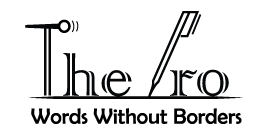 Below are the best practices in translation services that we have found to be very effective and efficient.
Below are the best practices in translation services that we have found to be very effective and efficient.
1. Assemble a team of two for translation services
We strongly recommend clients use a team of two translators for translation – one acts as the translator and the other as proofreader. For our medical, legal, and pharmaceutical translation, we usually use two translators.
Errors can be costly. Don’t be penny wise and pound foolish.
2. Retain highly qualified translators
- Hire translators who are ATA certified in your language pair (Chinese and English for example) and in your direction.
Make sure the certification was obtained for your language pair and in the desired direction.
For example, if you need to have English documents translated into Chinese, hire translators who are certified in the direction of English to Chinese translation.
- Hire translators who have background knowledge in the subject domain area.
The importance of domain knowledge cannot be overestimated. By hiring translators with strong background knowledge, you can avoid low-level terminology mistakes.
We match our translators’ credentials and expertise to the projects they work on.
- Hire translators who are native speakers of the TARGET language in the absence of an ATA certification.
For example, you need to translate a Chinese document into English. Since there are currently no certified Chinese to English translators, find a Chinese translator whose native tongue is English.
On the team of two translators, we recommend at least one should be a native speaker of the target language.
3. Exercise good team communication
When we use team translation, we put the translator and proofreader in direct contact with each other to ensure smooth and efficient communication. The documents are exchanged directly between the two individuals.
4. Reconcile discrepancies in translation services
If discrepancies exist, the translator will consult with experts or resources, such as dictionaries and reference books, and then consult with the proofreader. If further input is needed, we will send the word/phrase at issue to additional translators or seek clarification from the source (the author or the client). In general, we leave the decision making to the translator, who prepares the Letter of Accuracy for certified translations.
5. Maintain confidentiality
When consulting with domain knowledge experts or other linguists who were not originally assigned to the project, all identifiable information will be removed, and only minimum context is provided. The context will be re-written to remove any sensitive information as necessary.


